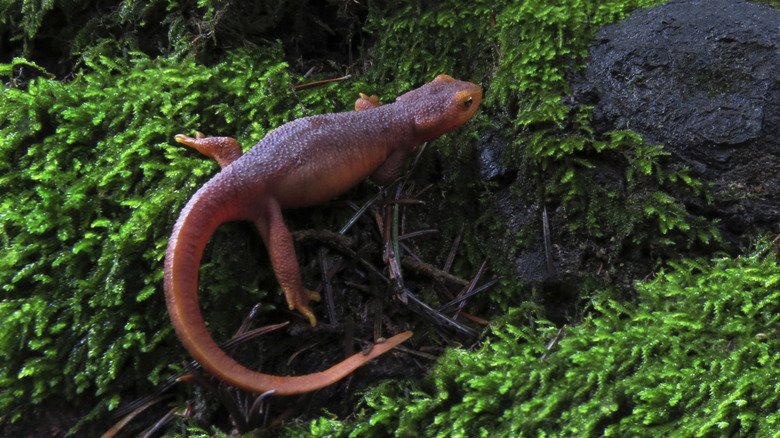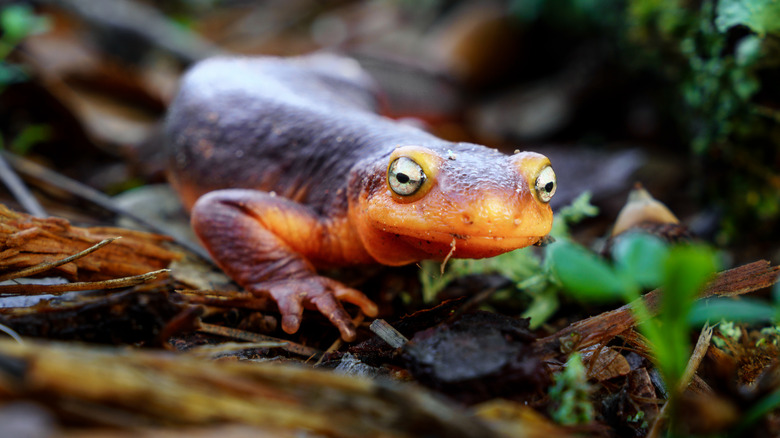The Dangerous Reason You Shouldn't Touch This Wild Newt
If you've ever gone on a wilderness adventure in California, then you probably already know a thing or two about the Golden State, including that you will need a hiking permit for most of the popular trails, and that it is jam-packed with gorgeous wilderness and wildlife. While many people already know that they should watch out for black bears and cougars when hiking in California (here's what to do if you are attacked by a bear and some warning signs that a mountain lion is nearby); what most people don't know they should also be looking out for is the adorably large-eyed and extremely toxic California newt.
The California newt — specifically Taricha torosa — is a brown, red, or yellow-backed salamander that is native to the Santa Monica mountains. This newt has special glands in its skin that produce a deadly neurotoxin called tetrodotoxin, which is the same toxin produced by pufferfish and the deadly blue-ringed octopus. Luckily, unlike the blue-ringed octopus which can inject the venom with a bite, the California newt simply secretes it from its skin (typically when attacked). However, the newt's poison is still more than strong enough to kill a person if ingested. Because of this, you should definitely never lick a California newt and refrain from touching or handling them whenever possible.
Why these critters are so poisonous and what to do if you touch one
While it is scary that these adorable and bright-bellied critters are so poisonous, it is important to know that the newt is simply trying not to get eaten. In particular, California newts are trying not to get eaten by their main predators — garter snakes, one of the only animals that have developed a resistance to the toxins of the California newt. Because of this, the less toxic newts get eaten and only the most toxic of the newts survive, making the overall California newt gene pool favor the newts that are the most poisonous. This causes an evolutionary reaction in which each generation of newts is slightly more toxic.
However, even though the California newt is slowly becoming more toxic, that doesn't mean that simply touching one will make you sick. If you do end up touching one, the best thing to do is thoroughly rinse the area with soap and water to wash the toxin away. As long as you don't have any open wounds in the area where you touched the newt and wash your hands thoroughly after handling the critter, you should be okay. However, if your child has touched the newt and you are not sure if they have licked their fingers afterwards or put them in any orifice, you should contact poison control immediately. You should also take any pets that have come into contact with these newts to the emergency vet as soon as possible.

